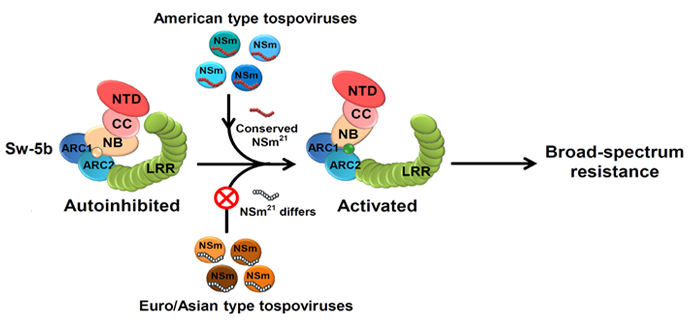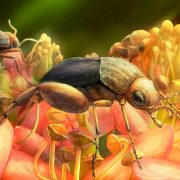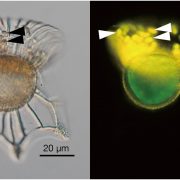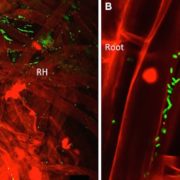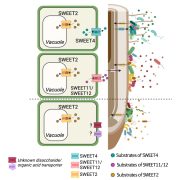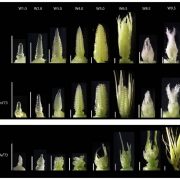Broad-Spectrum Disease Resistance in Tomato
Broad-Spectrum Disease Resistance in Tomato
Zhu et al. examine how a plant receptor protein confers broad-spectrum resistance to various tospovirus pathogens https://doi.org/10.1105/tpc.17.00180
By Min Zhu, Savithramma P. Dinesh-Kumar, and Xiaorong Tao
Background: Highly evolved microbes cause devastating diseases in plants and animals. Both plants and animals defend themselves against microbial infections using two specialized immune receptors—pattern-recognition receptors (PRRs) and nucleotide-binding leucine-rich repeat (NLR) receptors. PRR receptors reside at the cell surface, whereas NLR receptors occur inside the cell. The PRR receptors typically recognize signature features that are characteristic of a range of pathogens and trigger broad-spectrum resistance. In contrast to mammalian NLRs, which also recognize conserved signature features of pathogens, plant NLRs generally detect proteins called effectors produced by a specific strain of a pathogen, to confer strain-specific resistance.
Question: A tomato NLR receptor called Sw-5b imparts broad-spectrum resistance to tospoviruses, which are one of the most devastating plant viruses worldwide and cause annual global crop losses of 1 billion USD. We would like to know how this NLR receptor provides broad-spectrum resistance. We found that Sw-5b recognizes a characteristic 21-amino-acid small peptide of the viral NSm effector (called the NSm21 peptide) to activate broad-spectrum resistance to tospoviruses.
Findings: We found that the Sw-5b receptor directly associates with the NSm21 peptide to trigger the defense response. By conducting a series of analyses, we identified the recognition sites critical for the NSm21 peptide in Sw-5b. Furthermore, we identified a specific residue in Sw-5b (R927), located next to the NSm21 recognition sites, that prevents Sw-5b from triggering the defense response in the absence of pathogen infection. When a pathogen strikes, the association between Sw-5b and NSm21 possibly disrupts the residues close to R927, thereby priming Sw-5b for action. By examining the sequence of Sw-5b proteins in 25 wild tomato species from South America, we found that the NSm21 recognition sites in Sw-5b were positively selected during evolution to confer resistance to tospoviruses.
Next steps: Our findings provide the first example of a plant NLR that confers broad-spectrum resistance by recognizing a small conserved peptide from related pathogens. This is highly similar to pathogen recognition by cell-surface PRR receptors. It would be interesting to compare the downstream signaling pathways that trigger immunity between this intracellular NLR and PRR receptors.
Zhu, M., Jiang L., Bai, B.-H., Zhao, W. –Y., Chen, X.-J., Li, J., Liu, Y., Chen, Z.-Q., Wang, B.-T., Wang, C.-L., Wu, Q., Shen, Q.-H., Dinesh-Kumar, S. -P. and Tao, X.-R. (2017). The Intracellular Immune Receptor Sw-5b Confers Broad-spectrum Resistance to Tospoviruses through Recognition of a Conserved 21-amino-acid Viral Effector Epitope. Plant Cell 29: 2214–2232.


